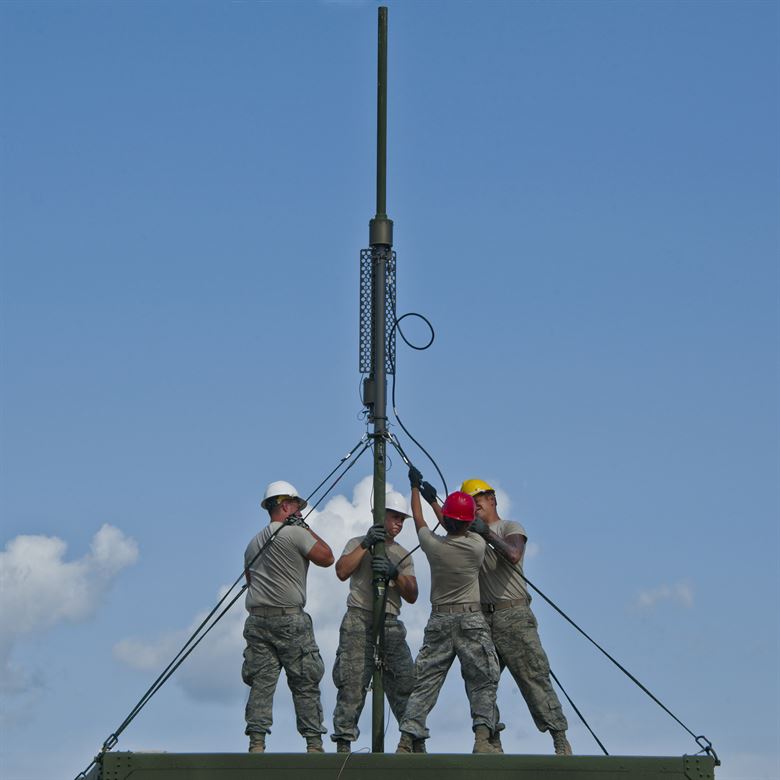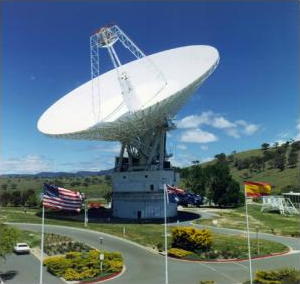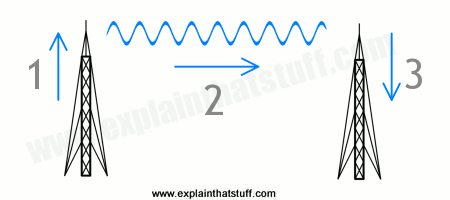Photo Credit: Samuel King. Photo Credit: NASA on the commons
An antenna is a metal rod that receives a radio wave and turns them into electrical signals. A transmitter is a different form of an antenna; turns electrical signals into radio waves which travel in any given direction towards space and back. The electrons within an antenna create electromagnetic radiation in the form of radio waves and travels at the speed of light with the radio program.
Directionality, gain, and bandwidth are the three major components of an antenna. The antenna must be strategically placed, and shaped, in order to properly receive the radio signal. The directionality of the antenna will vary depending on frequency. The gain of an antenna is the amount of boosted signal required for clear communication; the best reception will come from a bigger gain. Bandwidth is used to determine the range of frequencies. The further you are trying to reach, the more bandwidth required.
Directionality, gain, and bandwidth are the three major components of an antenna. The antenna must be strategically placed, and shaped, in order to properly receive the radio signal. The directionality of the antenna will vary depending on frequency. The gain of an antenna is the amount of boosted signal required for clear communication; the best reception will come from a bigger gain. Bandwidth is used to determine the range of frequencies. The further you are trying to reach, the more bandwidth required.
Photo Credit: Chris Woodford
An antenna, receiver, and transmitter work closely together to efficiently send and receive radio waves. The electricity flow in the antenna vibrates the electrons and produces radio waves. Then the wave travels trough the air and back down into the receiver making the electron vibrations which produces the original signal.
Typically, antennas are co-located with a stationary ground-to-air radar, but that is not always the case. Being able to set-up and tear-down mobile radar/radio sites is necessary in today's ground control operations. When attempting to control aircraft in remote locations, it is important to fully understand the physics and abilities of the antenna. For effective communication with aircraft, personnel should understanding the difference in radio frequencies, direction and placement of the ground radios, and know all components (such as an antenna) of required equipment.


